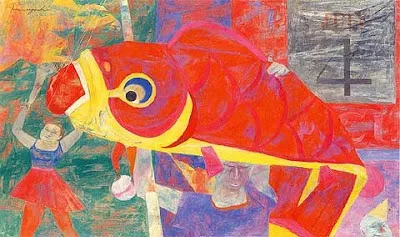As humans, we crave certainty.
Clear-cut answers reassure us, giving us the illusion of control. They allow us to tie things up neatly with a bow and feel satisfied that we’ve “solved” something.
But the reality is that the world rarely offers us such clarity. Most of life operates in the gray areas, where two seemingly opposing truths can coexist. And learning to accept this ambiguity is a powerful skill—one that art, both in creation and appreciation, teaches us better than most disciplines.
Art encourages us to embrace pluralism.
Whether we’re interpreting a painting or making one, art reminds us that multiple perspectives can exist simultaneously. It teaches us that accepting a different viewpoint doesn’t invalidate our own but rather enriches our understanding.
This idea is critical, especially in a world that is increasingly polarized.
Interested in learning more about STEAM? Check out these related post:
- How Art Appreciation Fosters Critical Thinking and Problem-Solving in STEAM
- How to Foster Emotional Intelligence Through Art and STEAM Education
Table of Contents
Critical Thinking: Learning to See in Shades of Gray
At its core, art appreciation challenges us to abandon the comfort of black-and-white thinking. When we engage with art, we’re asked to consider alternative viewpoints and reflect on the fact that two very different interpretations can both be true.
- Multiple perspectives don’t negate each other: Looking at a piece of art, one viewer might see rebellion, while another might see peace. Both are valid interpretations. The genius of art is that it holds space for multiple truths without collapsing into chaos. It teaches us that just because someone sees things differently doesn’t mean they’re wrong—and it doesn’t mean we are either.
- Ambiguity as a tool: Art lives in the gray area. It challenges the idea that there’s always a right or wrong answer and instead asks us to sit comfortably with ambiguity. In doing so, it forces us to develop the critical thinking skill of holding two or more perspectives in our minds at once. This ability is not only valuable in art but is essential for navigating complex societal and personal problems.
Accepting that someone else’s viewpoint doesn’t invalidate your own is a crucial life lesson—one that fosters empathy and helps break down the polarization we often see in debates.
Problem-Solving Through Pluralism: Lessons from Art
Art not only teaches us to accept multiple perspectives but also to use that acceptance as a tool for problem-solving. In fields like science and engineering, where solutions can often feel binary, art reminds us that creativity thrives in the gray areas.
- Interpreting art mirrors real-world problem-solving: Just as we approach an artwork and see different layers of meaning, problem-solving in STEAM fields benefits from looking at a challenge from multiple angles. A good scientist or engineer knows that innovation often comes from examining a problem through various lenses.
- Ambiguity doesn’t mean indecision: Just as interpreting art isn’t about making arbitrary guesses, embracing ambiguity in problem-solving doesn’t mean being indecisive. Rather, it’s about understanding that a single issue may have several valid solutions. Accepting this can lead to more creative, flexible approaches to challenges in any field.
Why Pluralism Matters in STEAM
Integrating art into STEAM is about more than just making education more engaging. It’s about equipping students with the ability to hold multiple truths, think flexibly, and approach problems with an open mind. In art, the “answer” isn’t always clear, and that’s a valuable lesson for life.
Art appreciation fosters the skill to see the world from various perspectives, to understand that different viewpoints don’t invalidate each other. This pluralism is the key to empathy, innovation, and, ultimately, more thoughtful problem-solving. In a world that’s rarely black and white, these are the skills that will guide us forward.

